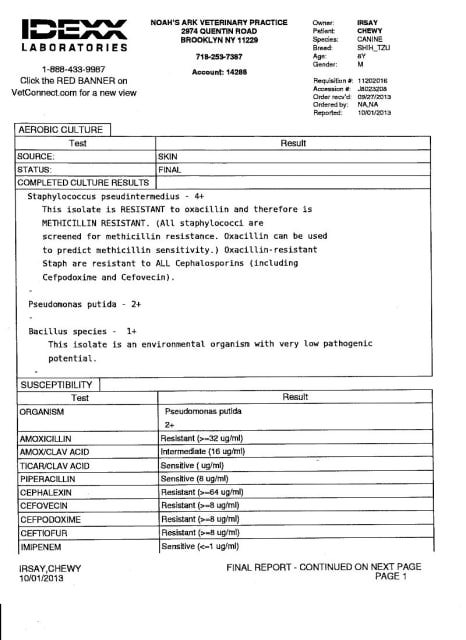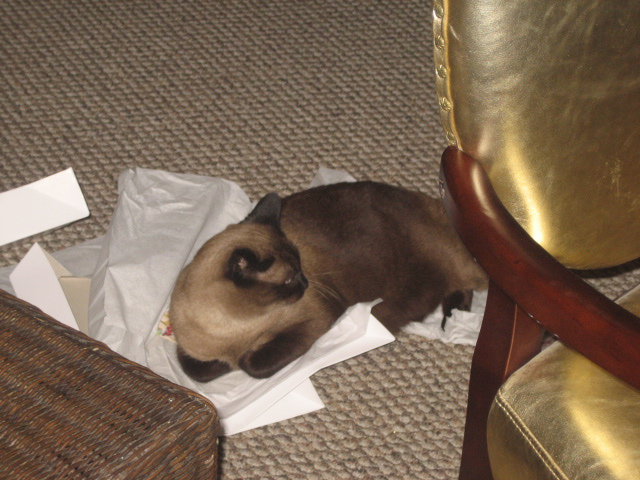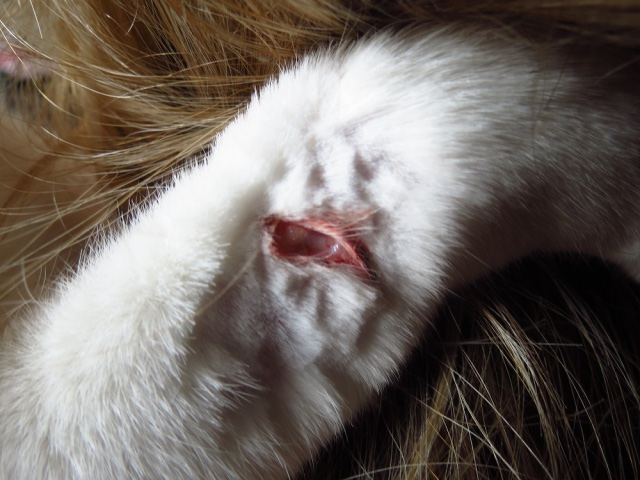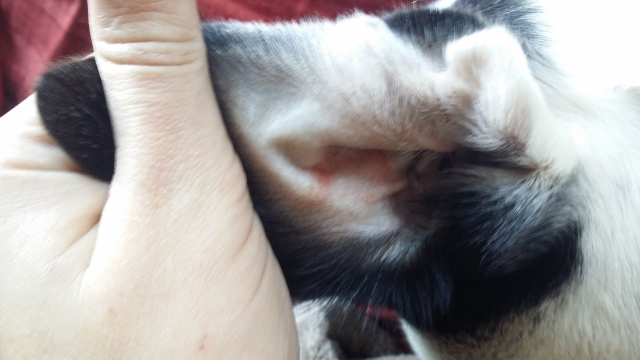QuestionDr. Gotthelf,
I have a 2 year old spayed female labrador retriever (up to date with vaccinations) who has been dealing with a chronic yeast infection in her left ear and in her phalangeal region, and what looks like folliculitis in the pubic and axillary regions. This began when she was nearly 1 and symptoms have since then occurred sporadically.
We took her to the vet after she started showing symptoms the first time (scratching, shaking of the head, rubbing, and chewing her feet). Being that it was summer and she had been around the water, the vet said that it was a yeast infection due to her ears staying wet. Her ears were cleaned thoroughly and we were sent home with instructions to keep her out of the water.
A month (if that) later, her symptoms came back and we took her in again. This time the vet wanted to give her a prescription topical cleanser for her ear to be used twice daily for two weeks and followed by a medicated ear ointment.
Though she had an obvious yeast infection in her ears, the vets didn't take notice to her skin which, to me, looks pretty concerning (red, scaly pustules with hair loss.) My lab had recently gotten fleas and had I had given her a flea treatment which would have explained her skin condition as flea allergies...if it had stopped there.
After getting her treatments, her symptoms never fully stopped like they would if a human took an antibiotic for strep throat. Her symptoms just gradually lighten every few months and then come back full force; both the yeast and the skin infection show up at the same time.
Another vet recommended a diet change so we did it twice and saw no results either time.
I'm studying to become a vet myself so with my background in biology, I've tried to do as much research as possible, however my resources are limited.
For the past few months my lab has shown no symptoms until about a week ago. Now I am getting more concerned with what is causing this. I'm hoping I'm off when I say I've considered Malassezia Dermatitis (consistant with her signs/symptoms) brought on by an underlying endocrine disease, or even systemic candidal disease.
We live in the Pacific Northwest so it is wet a good portion of the year, however humidity stays relatively low. Also, I have a lab/pointer mix who has not had a similar disorder.
Whether it's serious or something simple that's been looked over, it's causing her a great deal of pain. The shaking, rubbing, chewing, and scratching is constant and the hair loss on her abdomen is getting worse. I know it's hard to diagnose a case with limited information, but as you can see I've exhausted my efforts and I understand that veterinarians are busy people and can't dedicate tons of time to individual case studies, however I am in need of an expert opinion.
If you know what this may be and how to treat it or if you have any suggestions for me and my vet to further investigate, please let me know.
Thank you so much for your time.
Lara S.
AnswerMalassezia skin and ear disease is almost always secondary to an underlying allergic condition. It may go away with treatment, but because the allergy remains, it will always return. If this started as a young pup, food allergy is a possibility. If it is an allergy to things in the environment, then steroid therapy or immunotherapy is the answer
(allergy testing and special serum). Yeast infections can be treated topically with high concentration chlorhexidine shampoos or systemically with several drugs including ketoconazole, itraconazole, and fluconazole. For the yeasts inthe ears, I recommend a product called Malacetic Ultra Otic, available from many veterinarians. It is used twice daily in the affected ears for at least 2 weeks.

 excessive allround hair-loss
Question
Laila
I have a female lab, 4 years of age. She
excessive allround hair-loss
Question
Laila
I have a female lab, 4 years of age. She
 Ciprofloxacin
Question
Skin Culture Report Culture Report Page
Ciprofloxacin
Question
Skin Culture Report Culture Report Page
 Cat Urinating
Question
Sealey
So my grandma just moved in two
Cat Urinating
Question
Sealey
So my grandma just moved in two
 Cat with cut on front leg
Question
The cut
Hi, this morning I noticed that
Cat with cut on front leg
Question
The cut
Hi, this morning I noticed that
 red bumps in dogs ear
Question
left ear
My puppy has red bumps in her
red bumps in dogs ear
Question
left ear
My puppy has red bumps in her